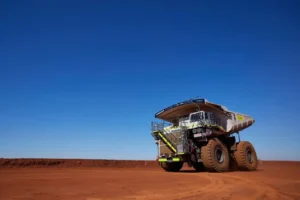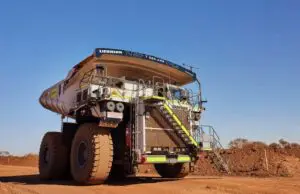The head of the electricity network in the world’s most advance renewable energy grid says the uptake of electric vehicles will help households halve their annual energy bills as they swap fossil fuels for green electricity.
Andrew Bills, who recently left his role as head of Queensland coal generation company CS Energy to become CEO of SA Power Networks, says electric vehicles are the next “big thing” in the green energy transition, given that more than one third of homes already has rooftop solar.
“We can kill two birds with one stone when it comes to electric vehicles, with cheaper transport and cheaper energy for households,” Bills said.
“(EVs) have batteries three to ten times the storage capacity of home batteries and are a great opportunity to utilise the state’s abundance of renewable energy. Emerging technologies like smart two-way chargers for EVs also have real potential to slash energy costs for consumers.
“Electricity is much cheaper for running a vehicle than petrol/diesel and indicatively we believe that the average household could halve their total energy spend from about $4,500 to about $2,400 per annum by switching to an EV.”
South Australia is leading the world in the transition to renewables, mostly because its renewable power comes entirely from variable sources such as wind and solar, and not from hydro or geothermal that dominate other high renewable grids in Scandinavia, Canada, Iceland and Uruguay.
Wind and solar account for more than 71 per cent of state demand – averaged over the year – and in month of October averaged 86.9 per cent of state demand. The state is expected to reach “net” 100 per cent renewables – averaged over 12 months – within a few years.
Another feature of the South Australia grid is the high penetration of rooftop solar, which is now meeting all the demand needs on the SAPN network from time to time.
Bills says the network company needs to be getting more value from customer investment in energy resources such as rooftop solar, batteries and even electric vehicles, including from two-way power flows.
“South Australia already is a world leader with 350,000 rooftop solar installations, more than 35,000 batteries and significant potential that will be unleashed by electric vehicles as we electrify transport,” Bills said.
More than 37% of the network’s customers have rooftop solar, with a total installed capacity of almost 2.2GW – and this is more than sufficient to regularly meet the State’s electricity needs in the middle of mild sunny days.
Bills says the uptake of EVs is expected to “explode” as car manufacturers move away from ICE vehicles, and said there was more than spare capacity in the local grid to meet the demand from EVs without costly upgrades.
“The network has tremendous spare capacity outside peak times,” Bills said.
“We can unlock this capacity and create significant value for customers and the community by encouraging ‘flexibility’ in energy use. If we get it right, we can significantly increase network asset utilisation and help lower energy costs for all.”
The main focus would be to encourage households to use electricity as much as they could in the daylight hours, soaking up the excess solar and putting it in their EVs, or powering other appliances.
This can be done with smart energy management that respond to network signals; and by ensuring vehicle charging is spread across the day and week.








